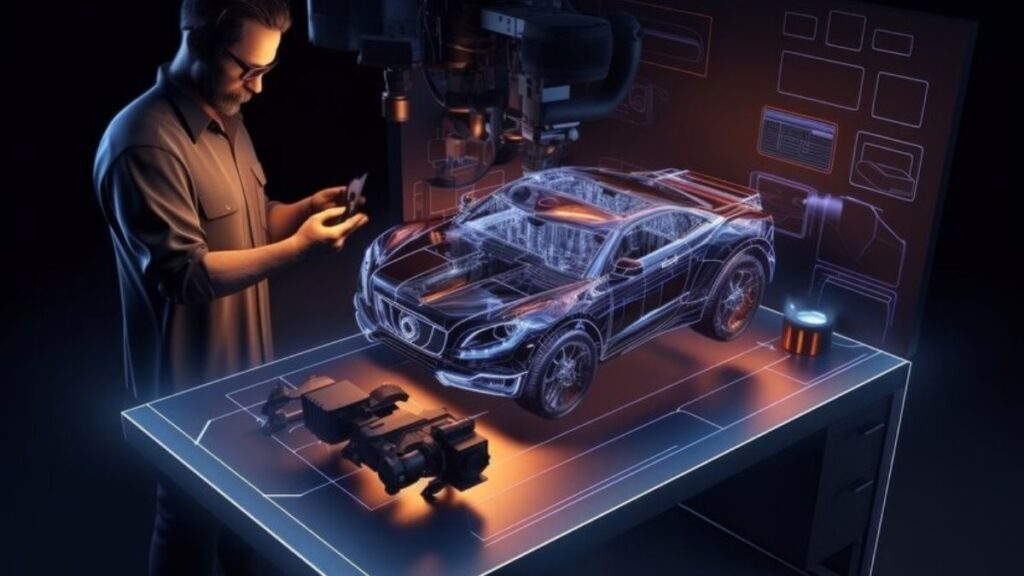The art of car tuning has undergone a significant transformation over the past few decades. What began as a purely mechanical endeavor has evolved into a sophisticated digital process known as chiptuning. This evolution reflects broader technological advancements and a growing understanding of automotive engineering. This blog will tell you about the history of chiptuning, its technological advancements, and the impact it has had on car performance and the tuning industry.
The Early Days: Mechanical Tuning
In the early days of car tuning, modifications were primarily mechanical. Enthusiasts would manually adjust various components to extract more performance from their engines. These adjustments included:
- Carburetor Tuning: Before the advent of electronic fuel injection, carburetors were the primary means of mixing air and fuel. Tuners would modify jets, needles, and float levels to optimize fuel delivery for more power and efficiency.
- Ignition Timing: Adjusting the ignition timing was another common practice. By advancing or retarding the spark, tuners could improve the engine’s combustion efficiency, resulting in better performance.
- Exhaust and Intake Modifications: Changing the exhaust system and air intake components allowed for better airflow, enhancing engine breathing and thus increasing power output.
- Camshaft Upgrades: Replacing stock camshafts with performance versions allowed for improved valve timing and lift, leading to increased horsepower and torque.
These mechanical modifications required a deep understanding of engine mechanics and a lot of trial and error. The results, while often impressive, were limited by the tuner’s ability to physically manipulate engine components.
The Digital Revolution: Electronic Control Units
The introduction of electronic control units (ECUs) in the 1980s revolutionized car tuning. ECUs are sophisticated computers that manage engine functions, including fuel injection, ignition timing, and emissions control. With the advent of ECUs, the possibilities for tuning expanded dramatically.
- ECU Mapping: The ECU contains maps, which are tables of data that dictate how the engine behaves under different conditions. Tuners began to modify these maps to optimize performance, a process known as remapping or chiptuning.
- OBD Systems: On-Board Diagnostics (OBD) systems provided a standardized way to access and modify ECU data. This made it easier for tuners to read and write data to the ECU.
- Fuel Injection: Electronic fuel injection replaced carburetors, allowing for more precise control over fuel delivery. This precision made it possible to achieve better performance and efficiency than was possible with mechanical systems.
- Ignition Systems: Modern ignition systems use electronic control to manage spark timing with great accuracy. This allows for optimal combustion, improving power and reducing emissions.
The shift from mechanical to electronic tuning required new skills and tools. Tuners now needed to understand computer programming and electronic systems in addition to traditional engine mechanics.
The Rise of Chiptuning
Chiptuning emerged as a specialized field within car tuning. It involves modifying the software within the ECU to improve engine performance. Here’s how chiptuning works:
- Reading the ECU File: The first step in chiptuning is to read the original software from the ECU. This is done using specialized tools that communicate with the ECU and download its data.
- Analyzing and Modifying Maps: Once the original file is extracted, tuners analyze the data to identify areas for improvement. They then modify maps controlling fuel delivery, ignition timing, boost pressure, and other parameters to enhance performance.
- Writing the Modified File: The modified file is uploaded back to the ECU. This step requires precision to ensure that the changes are correctly implemented and that the ECU functions properly with the new data.
- Testing and Fine-Tuning: After the new software is installed, the car is tested to ensure the modifications have the desired effect. This may involve several rounds of adjustments to achieve optimal performance.
Chiptuning offers several advantages over traditional mechanical tuning:
- Precision: Electronic control allows for far more precise adjustments than mechanical methods. This precision translates into better performance, fuel efficiency, and emissions control.
- Flexibility: Chiptuning can be easily reversed or modified. If the results are not as expected, the original software can be reinstalled, or further adjustments can be made.
- Advanced Features: Modern ECUs offer features like variable valve timing, turbo boost control, and traction control. Chiptuning can optimize these features for enhanced performance.
The Future of Chiptuning
As automotive technology continues to advance, so does the field of chiptuning. Here are some trends shaping the future of chiptuning:
- Electric and Hybrid Vehicles: The rise of electric and hybrid vehicles presents new opportunities for chiptuning. While these vehicles don’t have traditional engines, their performance can still be optimized through software adjustments. For example, modifying the power delivery profile of an electric motor can enhance acceleration and efficiency.
- Advanced Driver Assistance Systems (ADAS): Modern cars come equipped with a range of ADAS features, such as adaptive cruise control and lane-keeping assist. Chiptuning can optimize these systems for improved performance and safety.
- Artificial Intelligence and Machine Learning: AI and machine learning are beginning to play a role in chiptuning. These technologies can analyze vast amounts of data to identify optimal tuning parameters, making the tuning process more efficient and effective.
- Sustainability: As environmental concerns become more pressing, there is a growing focus on sustainable tuning practices. This includes optimizing engines for better fuel efficiency and lower emissions without compromising performance.
- Remote Tuning: With the advancement of connectivity, remote tuning is becoming increasingly popular. This allows tuners to modify ECU settings over the internet, providing convenience and flexibility for car owners.
Boost Your Automotive Business with MyChiptuningfiles
Rev up your auto business with MyChiptuningfiles. We specialize in providing high-quality engine performance upgrades and auto-tuning solutions for independent garages and dealerships. Our custom-designed chiptuning files are engineered to increase engine power, torque, and fuel efficiency using advanced software such as WinOLS. In addition to chiptuning files, we offer extensive support and resources to help optimize engine performance and ensure customer satisfaction. Join our global network of over 53,000 partners who rely on our proven solutions and extensive industry knowledge. Improve your service offerings and stay ahead in the automotive market with MyChiptuningfiles.
Conclusion
The evolution of chiptuning from mechanical adjustments to digital optimization represents a significant leap forward in automotive technology. Chiptuning offers a level of precision, flexibility, and efficiency that was unimaginable in the early days of car tuning. As technology continues to advance, the field of chiptuning will undoubtedly evolve, offering even more opportunities to enhance vehicle performance. For car enthusiasts, understanding and embracing these advancements is key to unlocking the full potential of their vehicles.







